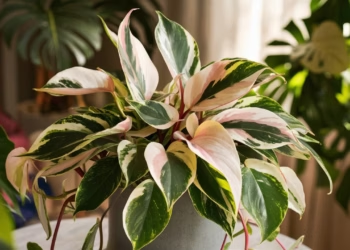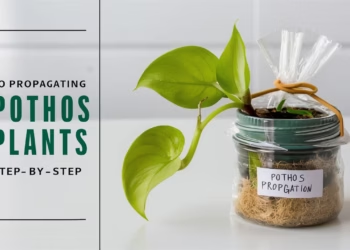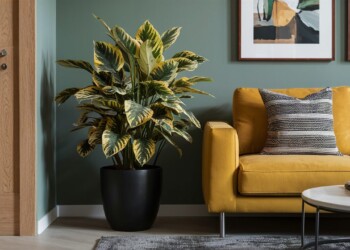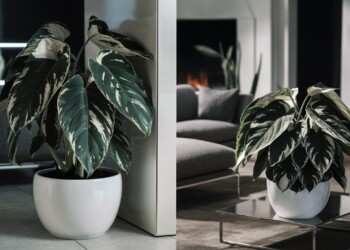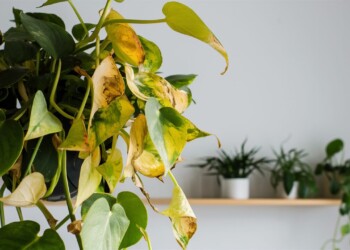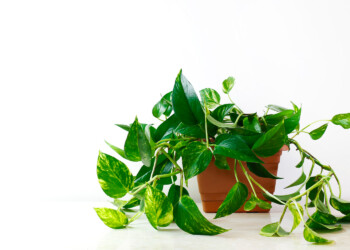So, you’ve decided to bring a little green into your home and stumbled upon the charming Hens and Chicks plants. These little succulents are more than just a pretty face; they’re tough, easy to care for, and perfect for anyone looking to start their houseplant journey. But how do you make sure your Hens and Chicks plants thrive? Don’t fret! This guide will walk you through everything you need to know about Hens and Chicks plants care (houseplants guide).
What Are Hens and Chicks Plants?
A Brief Overview
The “hens” are the main plant, while the “chicks” are the smaller offshoots that cluster around the base. Here some overviews:
- Common Names: Hens and chicks, hen and chicks, house leek
- Botanical Name: Sempervivum tectorum
- Family: Crassulaceae
- Plant Type: Succulent, evergreen perennial
- Mature Size: 6–12 inches tall, 6–18 inches wide
- Sun Exposure: Full sun to light shade
- Soil Type: Sandy, well-drained
- Soil pH: Neutral
- Bloom Time: Summer
- Flower Color: Light pink to reddish-purple
- Hardiness Zones: 3–11 (USDA)
- Native Area: Europe, North Africa
Unique Features
- Rosette Formation: The leaves form in a circular pattern, creating a rosette.
- Hardiness: These plants are incredibly resilient and can survive in various conditions.
- Propagation: Easily propagate by producing offsets, which can be separated and replanted.
Getting Started with Hens and Chicks (house leek)
Choosing the Right Variety
There are numerous varieties of Hens and Chicks, each with its unique color and leaf shape. Some popular varieties include:
- Sempervivum tectorum: Known for its green rosettes and red tips.
- Sempervivum arachnoideum: Features a web-like covering on its rosettes.
- Sempervivum calcareum: Noted for its gray-green leaves with red-purple tips.
Planting Hens and Chicks
Choosing the Right Pot
When selecting a pot for your Hens and Chicks, go for something with good drainage. These succulents hate sitting in water, so a pot with drainage holes is a must. Terra cotta pots are a great option as they allow for better airflow.
Soil Selection
Succulents, including Hens and Chicks, thrive in well-draining soil. You can either buy a pre-made succulent mix or make your own by mixing equal parts of potting soil, coarse sand, and perlite.
Planting Steps
- Fill the Pot: Fill your pot with the well-draining soil mix.
- Create a Hole: Make a small hole in the center.
- Place the Hen: Place the main “hen” rosette in the hole.
- Cover the Roots: Gently cover the roots with soil.
- Water Lightly: Give it a light watering to help it settle in.

Why Choose Hens and Chicks?
Low Maintenance
One of the biggest perks of Hens and Chicks plants is their low maintenance nature. They can tolerate a range of conditions and don’t require constant attention. Perfect for those with a busy lifestyle!
Aesthetic Appeal
With their unique rosette shapes and vibrant colors, Hens and Chicks can add a touch of elegance to any space. They look great in containers, rock gardens, and even as ground cover.
Resilience
These succulents are tough cookies. They can withstand harsh conditions, making them ideal for both indoor and outdoor settings.
How to Care for Hens and Chicks Plants
Light Requirements
Hens and Chicks plants thrive in bright, indirect light. While they can tolerate some direct sunlight, too much can cause their leaves to scorch. Place them near a sunny window where they can soak up plenty of light without getting burned.
Watering Tips
One of the golden rules for Hens and Chicks plants care (houseplants guide) is to avoid overwatering. These succulents are drought-tolerant and prefer their soil to dry out completely between waterings. Here’s a handy watering guide:
- Check the Soil: Stick your finger about an inch into the soil. If it feels dry, it’s time to water.
- Water Sparingly: When you do water, give them a good soak until water drains out from the bottom of the pot. Be sure not to let them sit in water.
- Adjust Seasonally: Water less frequently during the winter months when the plant’s growth slows down.
Temperature and Humidity
These plants prefer cooler temperatures, ideally between 65-75°F (18-24°C). They can tolerate lower temperatures but should be protected from frost. Humidity isn’t a big concern for Hens and Chicks, making them perfect for indoor environments.
Feeding and Fertilizing
Hens and Chicks don’t require much feeding. A light application of a balanced, water-soluble fertilizer during the growing season (spring and summer) will suffice. Avoid over-fertilizing as it can cause the plants to grow too quickly and lose their compact shape.

Common Problems and Solutions
Pests
While Hens and Chicks are relatively pest-resistant, they can sometimes attract aphids or mealybugs. If you notice these pesky invaders, here’s what you can do:
- Aphids: Spray the plant with a mixture of water and dish soap.
- Mealybugs: Dab them with a cotton swab dipped in rubbing alcohol.
Overwatering Issues
Overwatering can lead to root rot, a common issue with Hens and Chicks. If you notice the leaves turning mushy or the plant becoming discolored, reduce watering immediately and allow the soil to dry out completely.
Leggy Growth
If your Hens and Chicks start to look leggy, it might be a sign that they aren’t getting enough light. Move them to a brighter spot to encourage compact, healthy growth.
Flowering and Post-Bloom Care
Hens and chicks are monocarpic, meaning the central rosette dies after flowering. Flowers are not typically fragrant and appear on elongated stalks with six to twelve petals. After flowering, remove the stalk carefully or allow it to compost naturally. Offsets will continue the plant’s growth cycle.

Propagation and Potting
Potting and Repotting
Hens and chicks are excellent for container gardening. Use a shallow, well-drained container with cactus or succulent potting mix. Clay pots are preferred as they wick moisture and prevent overwatering. These plants can be grown alone or as part of a mixed succulent arrangement.
Propagating Hens and Chicks
From Offshoots (Chicks)
- Locate the Chicks: Look for the small offshoots around the base of the hen.
- Separate Gently: Use a sharp, clean knife or your fingers to gently separate the chick from the mother plant.
- Replant: Place the chick in a pot with well-draining soil and water sparingly until it establishes roots.
From Seeds
While less common, hens and chicks can be grown from seeds:
- Collect seeds from mature flowers and sprinkle them on cactus or succulent potting mix.
- Lightly moisten the soil and place the pot in a bright location.
- Seeds should sprout within three weeks. Add fine gravel and mulch to the surface once sprouted.
Hens and Chicks are a delightful addition to any houseplant collection. Their easy-going nature and unique appearance make them perfect for both beginners and seasoned plant enthusiasts. With the tips and tricks in this Hens And Chicks Plants Care (Houseplants Guide), you’re all set to grow and enjoy these charming succulents. Happy planting!
So, what are you waiting for? Dive into the world of Hens and Chicks and let your indoor garden flourish!
FAQs
Do hen and chick plants need sun?
Yes, hen and chick plants (Sempervivum) thrive in full sun. They need at least 6 hours of direct sunlight per day to maintain their compact form and vibrant colors. They can tolerate partial shade, but too much shade can make them leggy and less vibrant.
How long do hen and chick plants last?
Hen and chick plants can last for several years. The mother plant, or “hen,” produces offsets, or “chicks,” which can continue to grow and propagate the plant indefinitely. While the hen may eventually die after flowering, the chicks will continue the cycle, allowing the plant to thrive for many years.
Why are my hens and chicks plants dying?
- Overwatering: Hen and chick plants are drought-tolerant and can suffer from root rot if overwatered.
- Poor Drainage: Ensure the soil has excellent drainage to prevent waterlogging.
- Lack of Sunlight: Insufficient sunlight can weaken the plants.
- Pests or Diseases: Check for pests like aphids or diseases that might be affecting the plant.
What does an overwatered hen and chick look like?
An overwatered hen and chick plant may show the following signs:
- Mushy Leaves: The leaves become soft and mushy.
- Yellowing: Leaves may turn yellow or pale.
- Black Spots: Black spots can indicate root rot.
- Wilting: Despite seeming like a sign of drought, wilting can also indicate overwatering due to root damage.
Should I remove dead leaves from hens and chicks?
Yes, you should remove dead leaves from hens and chicks plants. This helps prevent rot and potential disease from spreading to healthy parts of the plant. Gently pull away the dead leaves or use clean, sharp scissors to trim them.

